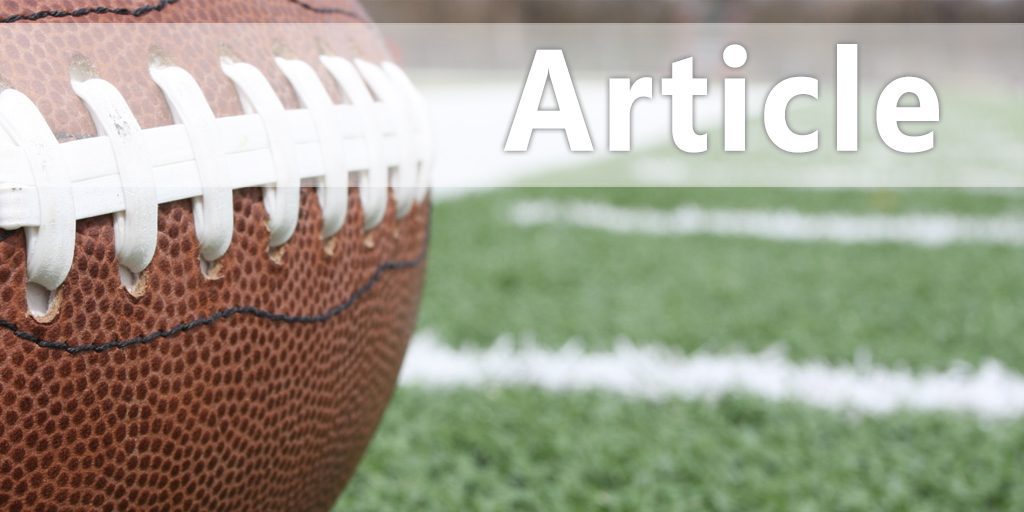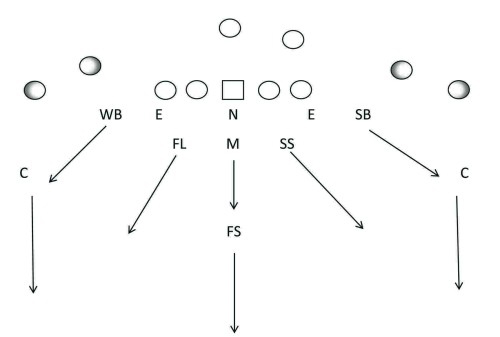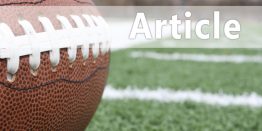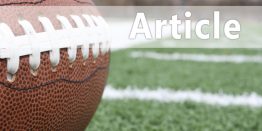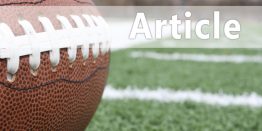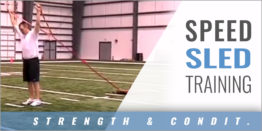|
Zone Defense on the Goal Line - To be efficient in this zone defense, give each player a specific responsibility. By: Rey Hernandez - Retired High School and College Coach Provided by: American Football Monthly
During this time, our passing game was a bit ahead of its time. Although we had a very successful program, my motivation to improve our play came not from a lack of success on game day but from my desire to better defend our own receivers in practice. The graduating seniors off our 1981 team had three receivers who earned Pac-10 scholarships and a QB who earned a scholarship to San Diego State. We had some pretty good players on the defensive side and our practices were very competitive. Whenever our receivers would catch a fade in the end zone it was a frustrating experience not so much because they caught the ball and scored but because they caught the ball even though we knew what they were going to throw when they came to the line of scrimmage. A number of factors came under consideration in designing our red zone goal line zone coverage. First, the call had to be one that could be used in specific down and distance situations. In addition, the call had to take into consideration offensive play call constraints such as clock management, down and distance, and time outs. The call also had to be one that we could easily disguise and give the initial appearance that we were still playing man-to-man. Because cover 2 was one of our base calls, we used this coverage and our base 50 front to design our goal line zone call. The major adjustment was a transition from two-deep safety coverage to a quarter safety look that employed match-up zone techniques (Diagram 1).
Special Game Management Considerations We used our 50 Goal Line Zone call on what we called high percentage passing downs. An ideal time to call it was near the end of the first half or the end of the game when the opponent had no timeouts left. In such cases running the ball would be risky as there was a distinct possibility that the game clock would expire before the offense could line up and run another play. We would make this call anywhere from the seven-yard line to the eleven-yard line. The seven yard line was a good spot for us because it left the offense with a more significant amount of yards to gain should they attempt to score on the ground. This, of course, could be tempting since we were lined up in a straight 50 front. We reminded all the defenders in such situations that any tackle short of the goal line was the same as a turnover. Pursuit to the ball was of critical importance as it was on any other play. We tried to avoid making this call any deeper than eleven yards from the goal line. Doing so would start to take our defense out of its comfort zone. Beyond the eleven yard line the offense now begins to have more area to vertically stretch the coverage and this could prove to be problematic especially against a team that has exceptional athletes at the skill positions. One of our goals was to shrink the field and keep the offense from stretching the field to their advantage. The specific position responsibilities are as follows: Corners: Both corners in this call have one responsibility and it is to defend the quick fade. We ask the corners to employ a cat and mouse pre-snap look that will give the receiver and quarterback the appearance of man coverage. We are, in fact, baiting them to throw the fade. The corner will maintain outside leverage against a receiver that has not stretched the field horizontally by his pre-snap alignment but he will not tip the leverage until the ball is snapped. On the snap of the ball, he will drop to the corner of the end zone to defend against the fade and, if it doesn't materialize, he defends the corner of the end zone against any receiver that might possibly end up there. This is strictly a true zone read for the corner. His vision is focused on the quarterback and he should see the ball's release. He is also instructed to not come off his coverage unless a ball carrier is moving toward the goal line with no other defender in a position to tackle him. In cases where the ball carrier is behind the line of scrimmage and can still throw the ball, it is better to attack the runner, force the pass and hope it is dropped or overthrown than to see the ball carrier enter the end zone uncontested. SB and WB: The strongside and weakside outside linebackers have a very important responsibility. The ability of the corners to play their assigned technique is dependent on the linebackers' ability to keep the offense from placing a vertical stretch on the corners. Both linebackers on the snap of the ball will drop straight down the line of scrimmage and defend any underneath routes that might develop at the snap of the ball. These routes might possibly come from the slot receiver or perhaps a back out of the backfield. This drop is also important as it will keep the corner from coming off his coverage should a ball carrier threaten the end zone on a designed running play or scramble. It is important to remind the linebackers that they are not to get any depth on this drop too early. The routes behind them are covered. The slot's release or the running back's pass release on the snap of the ball will determine their depth. These two defenders are playing match-up zone techniques as well. Safeties: The safeties are responsible for defending the curl zone from an inside break from the wide receiver or any vertical release by the slot. The corner knows that if his receiver takes an inside route release, he becomes the safety's responsibility. The safety is aligned with slight inside leverage as he may have to jump a quick slant. This is a route that the corner will also be able to recognize due to the secondary's pre-snap read into the quarterback. Discipline at this position is very critical. During the practice week, we would often bring our linebackers and defensive backs together to work on pattern recognition and combination recognition in a scout setting. It was here where we would try to replicate the different types of pass releases our opponents' were known to employ in the red zone. Mac and Flip: The inside linebackers are a critical part of this red zone call. They are responsible for the hook zones and will have to defend routes originating from their outside or perhaps coming out of the backfield. The first thing we tell these two linebackers is to disregard any play-action fake in the backfield. We remind them that running the ball is highly unlikely in this down and distance situation with clock management scenarios that are clearly in our favor. Their first responsibility is to find out who the first threat to their hook zone is. This will sometimes be a slot receiver or a back out of the backfield but it can also be a tight end. Once this threat is identified, both linebackers will take an aiming point to this receiver's release. Should the receiver's release threaten a zone other than his curl area, the inside linebacker will immediately look for crossing routes coming from either side of the formation. Down Linemen: At the snap of the ball, the defensive ends and the nose are aligned in a straight 50 look and are asked to employ their best pass rush moves. This play call might call for a down and distance substitution wherein you might want your best pass rushers in the game if they aren't already in there. Basically, we ask the defensive ends to give us their best off the edge as a speed pass rush and we ask the nose to try to beat the center to the side of their weakest pass blocking guard. Any pressure we can get can only be a positive as well as any pass rush that results in an offensive holding penalty. 50 Goal Line Stack C-3 in the Big Red Zone We considered the big red zone an area that extended from our 17-yard line to about our 22- yard line. Once again, we wanted to shrink the field and not leave us with too much real estate to cover. The call was used under similar circumstances to those that exist when a goal line zone call was employed closer to the goal line. Offensively, it had to be a high percentage passing down with the same clock management and time out constraints mentioned before. It was once again a call where the offense needed to get into the end zone and had a remote or non-existing possibility of getting a first down. This call was made from what we called our 50 Stack Cover 3 look (Diagram 2).
Unlike the Goal Line Zone call in the red zone, the 50 Goal Line Stack Cover 3 used a three-deep coverage that was complemented by two defenders that would defend the seams between the safeties and the corners. The position-specific responsibilities are as follows: Corners: Both corners are responsible for their deep-third zone and are instructed to keep the ball in front of them. This is an eight-man drop and there will be help to their inside and help underneath so there is no need to settle early. All combinations should develop in front of them and there should be no reason for them to vacate their zone prematurely. Safety: The safety is a deep middle-third player who needs to play the middle third from one hash to the other. It is important that he not make the quarterback's route selection decision any easier by committing too early to either a seam route should a horizontal stretch develop. Strong Safety and Flip: Both of these players are in a stacked position but they can walk out in order to adjust to trips. Their primary responsibility is to defend the seam between the corners and the deep-third safety. Both of these players should play a man concept in their seam. By employing effective route recognition as well as combination recognition reads, they will be able to cover a specific receiver instead of simply defending an area of the field that has no eligible receiver in it. SB and WB: These two defenders have a very important responsibility. Unlike the Goal Line Zone call that we employed in the red zone, there is no need to worry about a shallow vertical stretch so their drop will be a more traditional outside linebacker drop getting some depth. This is done as he crosses from the curl area and into the flat area should the offensive routes require it. The most important responsibility is to re-route or collision any vertical route that crosses his face. Down Linemen: The defensive ends and the nose will have the same responsibilities mentioned for red zone goal line defense when discussing the 50 Goal Line Call. Learning From Experience Although we used the 50 Goal Line Zone call sparingly, it was usually a very successful call for us. The key to its success came in part from the fact that we didn't call it on a consistent basis and that we did play a good deal of man defense in the red zone. As such, it was not easy to predict when we might call it. My experience with this call was that it was also a very strong perimeter run call that could be used in a situation where the opponent was not likely to run the ball inside the tackle box. We once used this call in a section championship semi-final contest against a team that was known for running the ball very well. We had had a long night defensively and our opponent had just scored with a few seconds left in the game to close their deficit to 50-49. Their head coach decided to go for the win and attempted a two-point conversion. Running a straight 50 front against this team was not wise in this situation but I had a feeling they would run off-tackle or to the perimeter on a belly keep play. I went on the field and called a goal line zone but I didn't tell our defensive staff or our head coach. Fortunately we stopped their belly keep play. I also called it on a critical fourth and goal to go call down on our goal line in a section championship quarterfinals game. If we stopped them, we win and if they score, we are eliminated. Our opponent scored on a transcontinental pass to the quarterback and our perfect 10-0 season came to an end. I learned the hard way that there are three specific plays that can hurt you if you aren't prepared. That's one. The other two are a halfback pass or a quarterback draw against a team that has a good running quarterback. From that day on, I made it a point to always put the players on notice about these three plays whenever we installed the defense in fall camp. About the Author: Rey Hernandez recently retired after coaching for 36 years in the San Diego area. He coached defensive backs for 11 years at Helix High School and then coached defensive backs at Grossmont Junior College for two seasons. Hernandez then spent 23 years at LaJolla High School where he was defensive coordinator and defensive backs coach. He served as LaJolla's head coach his last four seasons.
|
